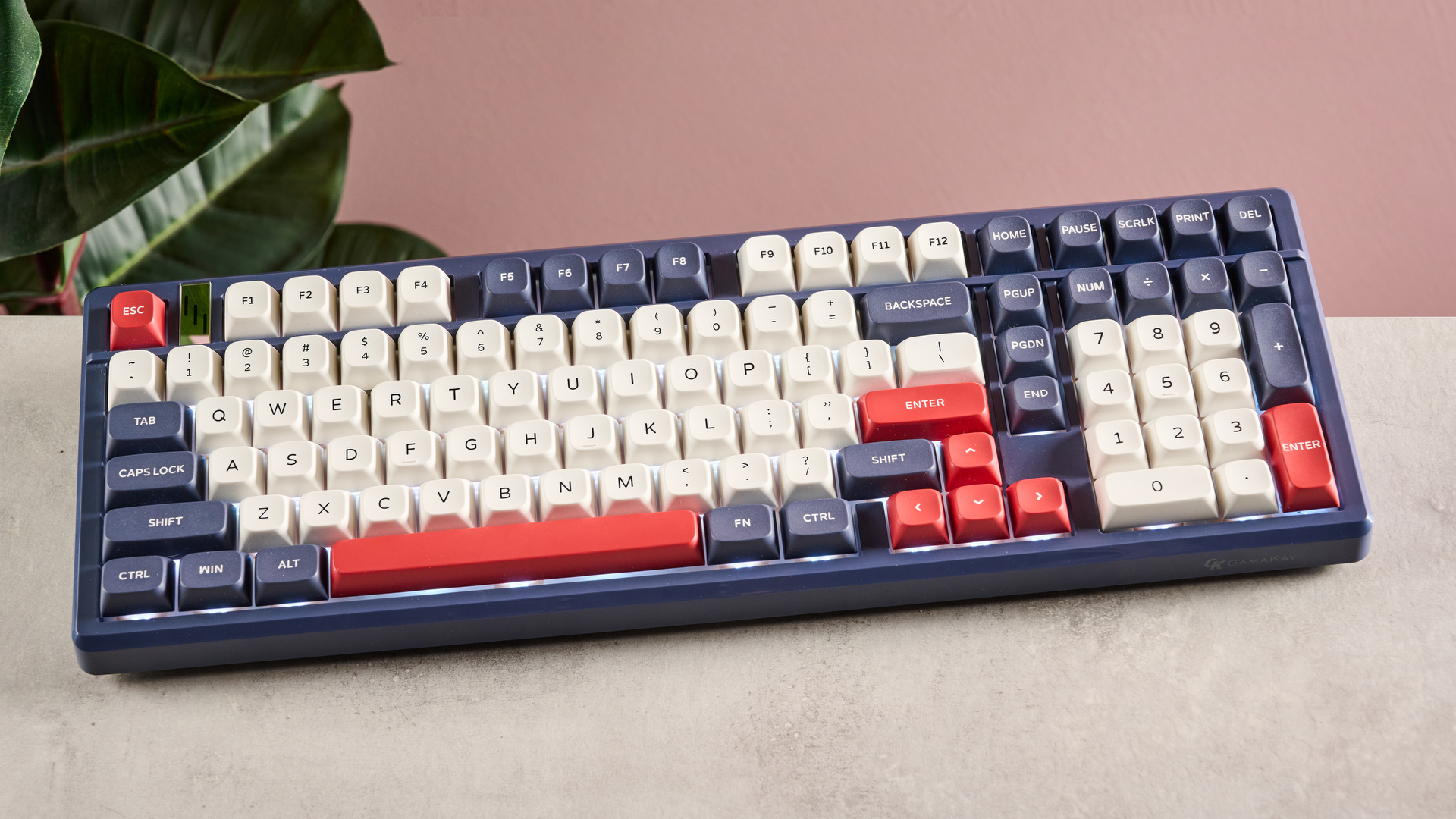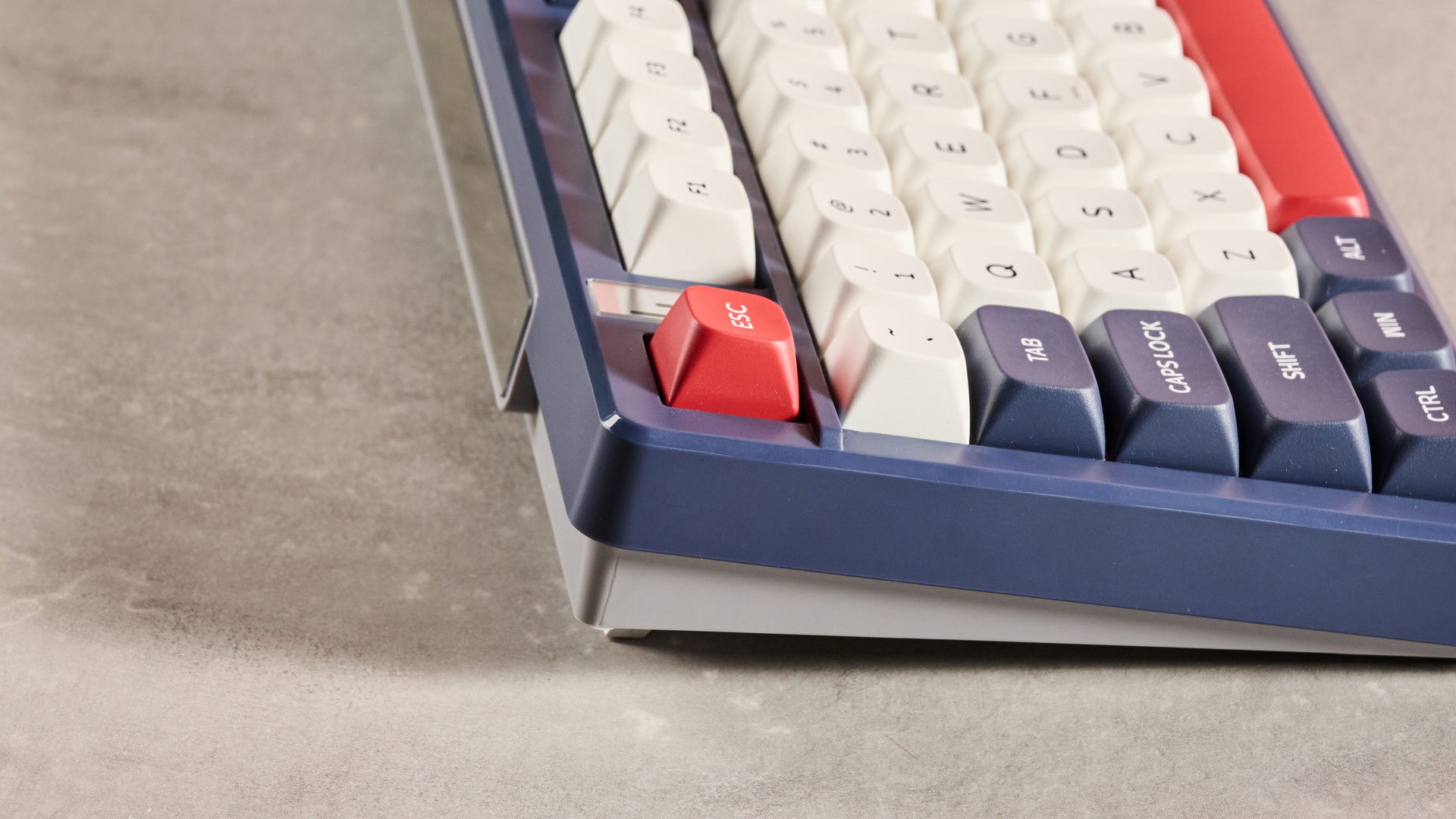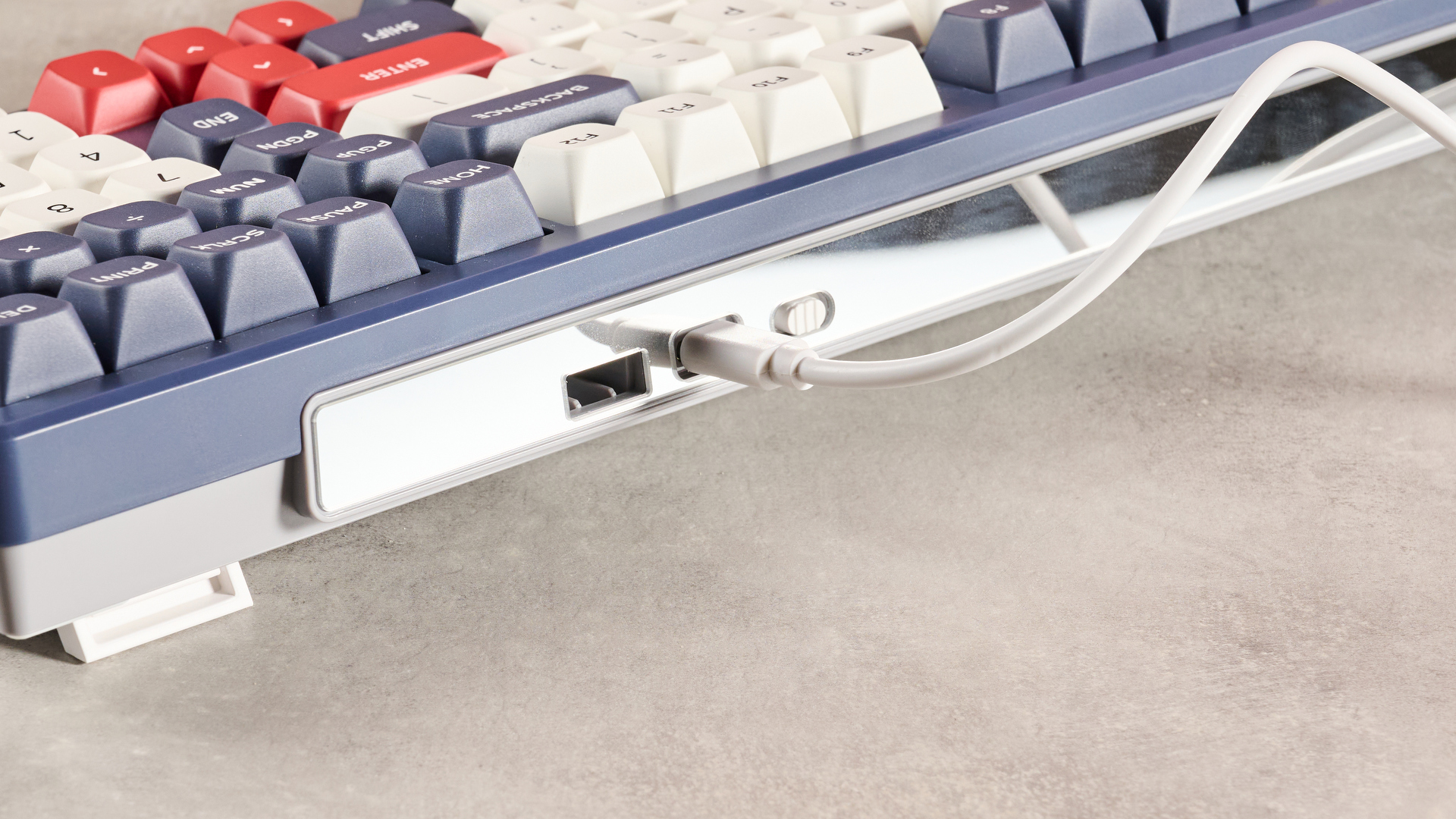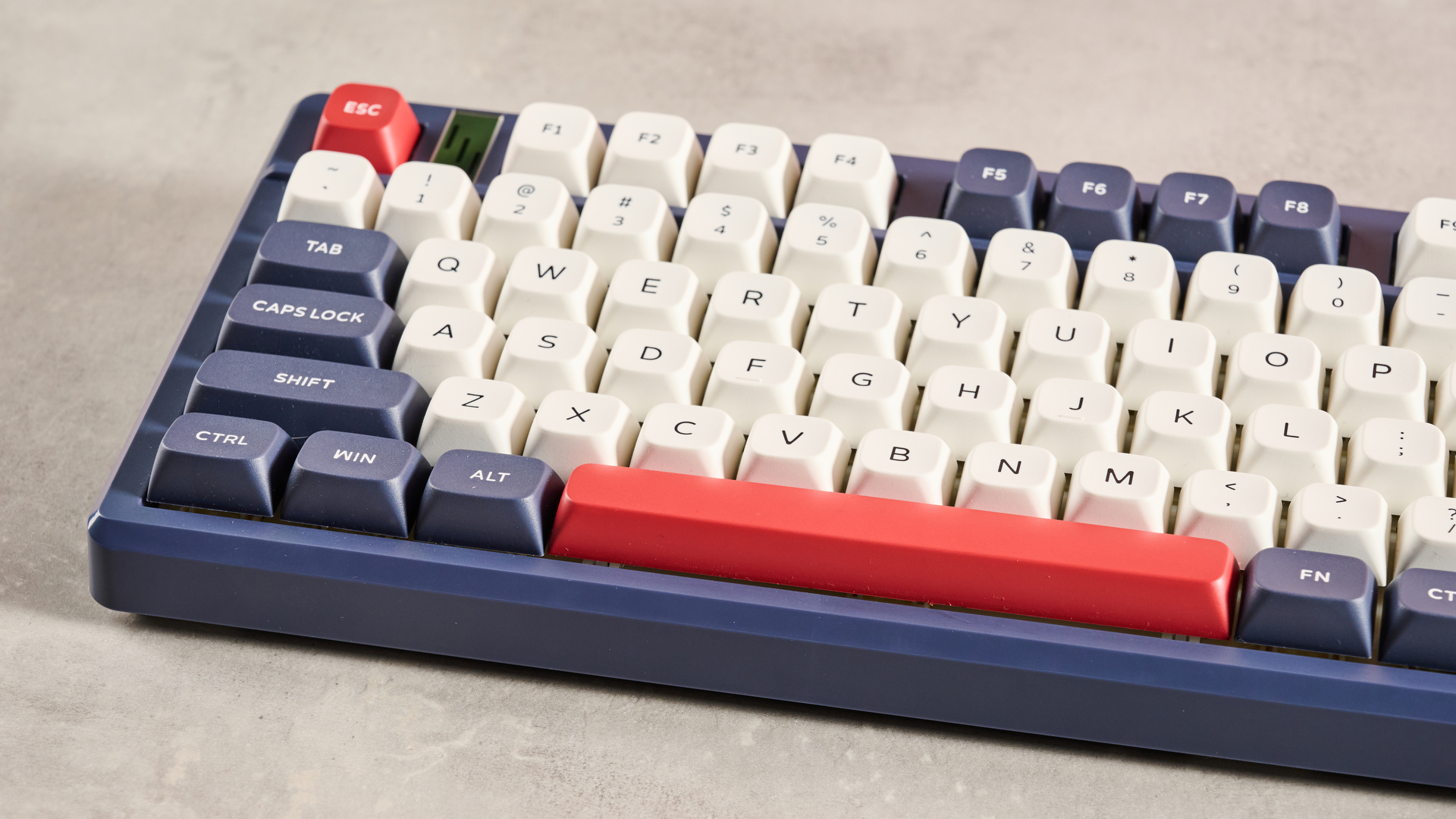
Gamakay TK101: one-minute review
The Gamakay TK101 is a wireless mechanical keyboard with a compact form factor at a reasonable price. It adopts a more retro aesthetic, reminiscent of older style mechanical keyboards. The multicolored keycaps do help to add interest, and their rounded edges are inviting.
They also feel as good as they look since they’re made from double-shot PBT. They have a slight yet satisfying texture, and are more premium than you might expect at this price point. In fact, the whole construction of the TK101 is admirable.
The chassis is quite thick and reasonably heavy considering its small layout. There’s no included wrist rest, though, which is a shame since I had to bend my wrists uncomfortably for most of the time.
While there are various shortcuts you can perform using the FN and other keys, there’s no labelling on the keys themselves for these extra functions, so you’ll have to refer to the manual.
The software for the TK101 offers the usual customizations, including key remapping. While there are some useful options on this front, the list of available media and system shortcuts is lacking somewhat. Key sensitivity adjustments are a welcome addition, though – but this is about the only performance-related tweak available.
The unit I had came with tactile switches, and while I found them satisfying to use thanks to their dampening and lubrication, they are quite heavy, and not as snappy as I would’ve liked for gaming. For typing, I found the MDA profile of the keycaps too thick, as I generally prefer low-profile laptop-style keys. And despite what Gamakay claims, I didn’t find them to be quiet either.
Connecting to multiple devices is easy, and the quick switching shortcuts work well. Up to three Bluetooth devices can be switched between, in addition to devices connected via the included 2.4GHz wireless dongle or a USB cable.
While I wasn’t able to deplete the battery completely during my time with the TK101, after a few days of varied use it dropped to about 50%, which isn’t a very impressive performance.
For the price, the TK101 punches above its weight thanks to its premium construction and hardware. However, I found the tactile switches a little too heavy, and it lacks some of the more advanced features gamers and other tinkerers might wish for.
If you’re after a keyboard with an even lower price but still delivers great performance, the Keychron C3 Pro is a solid choice; and for something more gaming-orientated, the Logitech G213 Prodigy may be a better alternative.

Gamakay TK101 review: price and availability
- $89 / £76 / AU$150
- Available now in multiple colorways
- Good price, but some cheaper alternatives
The Gamakay TK101 costs $89 / £76 / AU$150 and is available now in three colorways: White & Grey, Black & Red, and Cyan & Grey. You can configure it with Saturn (linear) or Pluto (tactile) switches, although these are hot-swappable, with Gamakay selling more options on its website.
The TK101 is well-priced for a wireless mechanical keyboard with multiple connectivity options. The Logitech G213 Prodigy, one of the best mechanical keyboards, is even cheaper than the TK101, but it lacks wireless connectivity, and while we enjoyed using it, we weren’t hugely impressed with its build quality. It can be customized, though, which may make it better for gamers.
There’s also the Keychron C3 Pro, which is the best keyboard with mechanical switches and a compact layout in our eyes. It’s even cheaper than the TK101, and we were very impressed with the feel of its mechanical switches. But, again, it lacks wireless capabilities.
Value: 4 / 5

Gamakay TK101 review: specs

Gamakay TK101 review: design and features
- Retro looks
- Thick chassis
The TK101 harks back somewhat to traditional mechanical keyboards, thanks to its chunky-looking keys and basic design. It’s certainly not as brash as other gaming keyboards, although the multi-tonal colorways do add elements of interest and vibrancy.
While the 98% form factor of TK101 feels compact, the spacing of the keys is still wide enough for comfortable finger placement. To achieve this, though, dedicated media keys and a volume wheel have been sacrificed.
It’s reasonably thick and heavy, although not as substantial as some other mechanical keyboards. The overall construction is solid, and the mirrored back panel – which frames the USB-C port, power switch and a compartment for storing the 2.4GHz USB dongle – is a nice touch.
The two-step feet are useful, offering meaningful height adjustments to meet individual preferences. These also feel well-made and didn’t create any wobble when propping up the keyboard.

The rounded double-shot PBT keycaps appear quite thick despite their MDA profile, but they’re comfortably indented and their texturing feels premium, being smooth while offering enough grip. If you don’t like them, though, you can swap them out, along with the switches, as the TK101 is hot-swappable.
While various keys have alternative functions accessible via the FN key, these aren’t labelled, meaning you’ll have to acquaint yourself with the manual. Functions include media playback controls, opening Windows Explorer, adjusting the RGB lighting.
The software for the TK101 allows for further customizations, with macro creation, RGB tweaking, and key remapping all present and correct.
On the latter front, four rebinding layers are available if you include the Fn shortcuts. Assignable functions include key combinations with modifiers and mouse inputs (excluding cursor movements), both of which are useful inclusions. However, the selection of media and system shortcuts is small compared to some rivals.
The software also allows you to adjust the sensitivity of the keys, but this is about the only performance-related tweak available, which might disappoint serious gamers looking for more scope in this department.
More impressive are the multiple connectivity options of the TK101. It can connect to devices wirelessly via the 2.4GHz USB dongle or via Bluetooth, the latter of which can accept up to three simultaneous connections, hot-switchable via the FN and number keys.
The USB port can also be used to establish a wired connection as well as charge the TK101, which adds to its versatility.
This review has been updated to correct the assertion that no software is available for the TK101; a tool is available for customizing various functions, and further testing has been conducted in light of this.
Design & features: 3.5 / 5
Gamakay TK101 review: performance
- Nicely damped
- Heavy tactile switches
- Could really do with a wrist rest
The performance of the TK101 is somewhat mixed. The gasket mounting helps to cushion presses, while the tactile Pluto switches I had preinstalled in my unit were well lubed. However, they felt a little too heavy, offering more resistance than others, which can cause fatigue after a while. If you’re after something more snappy, then these switches probably won’t suit you. However, the MDA profile of the keycaps does at least shorten travel distance.
For typing, though, I still found this profile too thick, as I generally prefer low profile keys for productivity tasks. And despite Gamakay’s claims regarding its sound-deadening design, I found the TK101 quite noisy too.
Most egregious of all, though, is the lack of wrist support, since the aforementioned thickness of the chassis forces your hands to angle sharply no matter how you adjust the feet. This makes gaming equally uncomfortable when adopting the standard WASD position, and also causes your thumb to hit the edge of the space bar rather than the top. Both these issues were remedied when I used my own wrist rest. Combined with its lack of customization options, the TK101 isn’t as capable as the best gaming keyboards.

I had no problems connecting via Bluetooth or the 2.4GHz dongle, and switching between three Bluetooth devices using the keyboard shortcuts was easy and responsive. However, the manual states that switching to a 2.4GHz connection can also be done via these shortcuts, but this didn’t work for me; only toggling the rear switch did.
I wasn’t able to test the battery to exhaustion, but it dipped to about 50% after several days of varied use, connecting to multiple devices via Bluetooth and the 2.4GHz dongle. This isn’t exactly a stellar performance, and many wireless keyboards do last longer.
Performance: 3.5 / 5
Should I buy the Gamakay TK101?
Buy it if…
Don’t buy it if…
Gamakay TK101 review: also consider
How I tested the Gamakay TK101
- Tested for several days
- Used for gaming and productivity
- Plentiful keyboard experience
I tested the TK101 for several days, during which time I used it for working, gaming, and general browsing.
I did plenty of typing with it, and played Counter-Strike 2, a good test for any peripheral given the game’s demand for fast and accurate inputs.
I have been PC gaming for over 25 years, and have experience reviewing keyboards for both gaming and productivity purposes.
- First reviewed January 2025
- Read more about how we test







